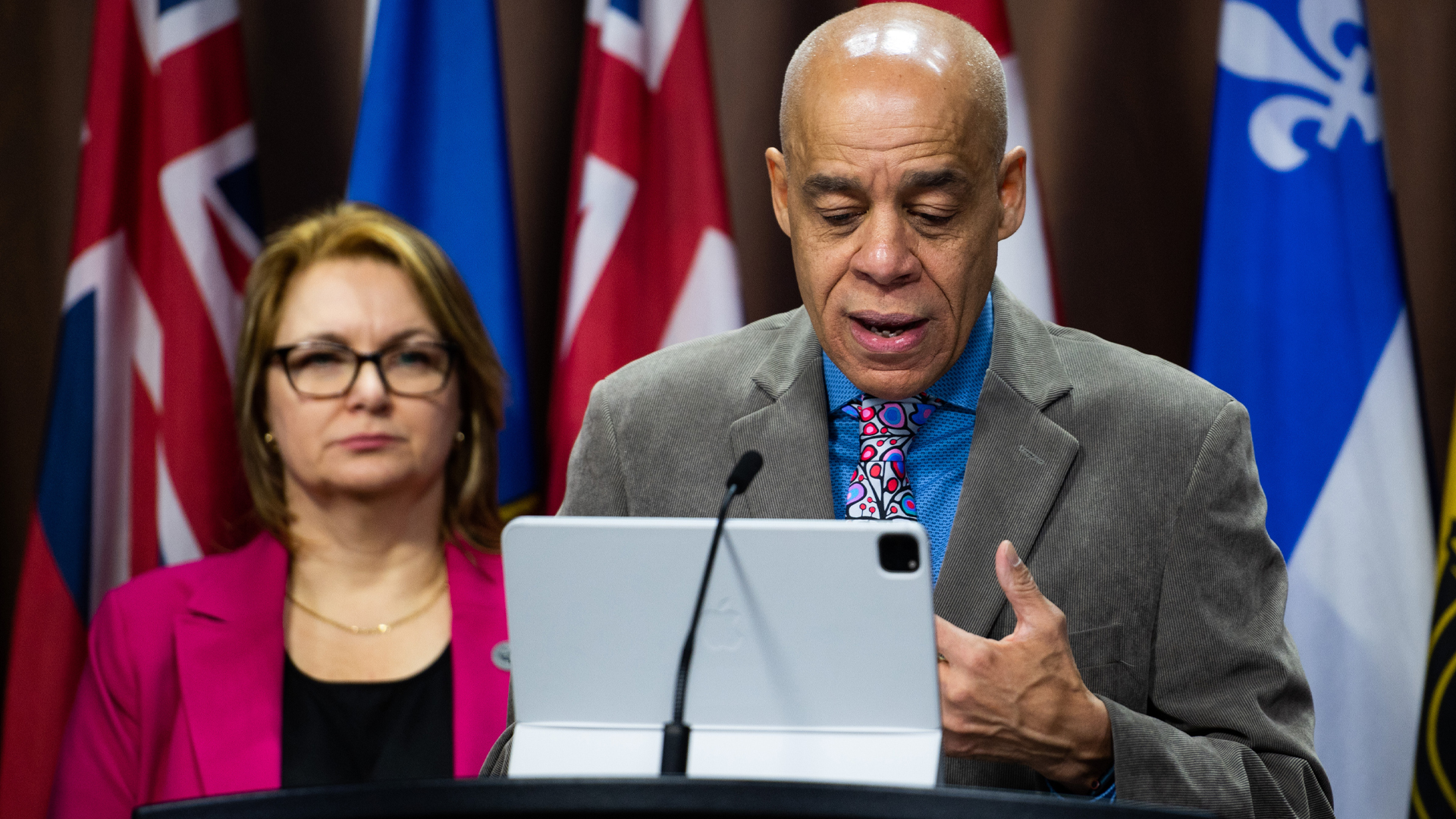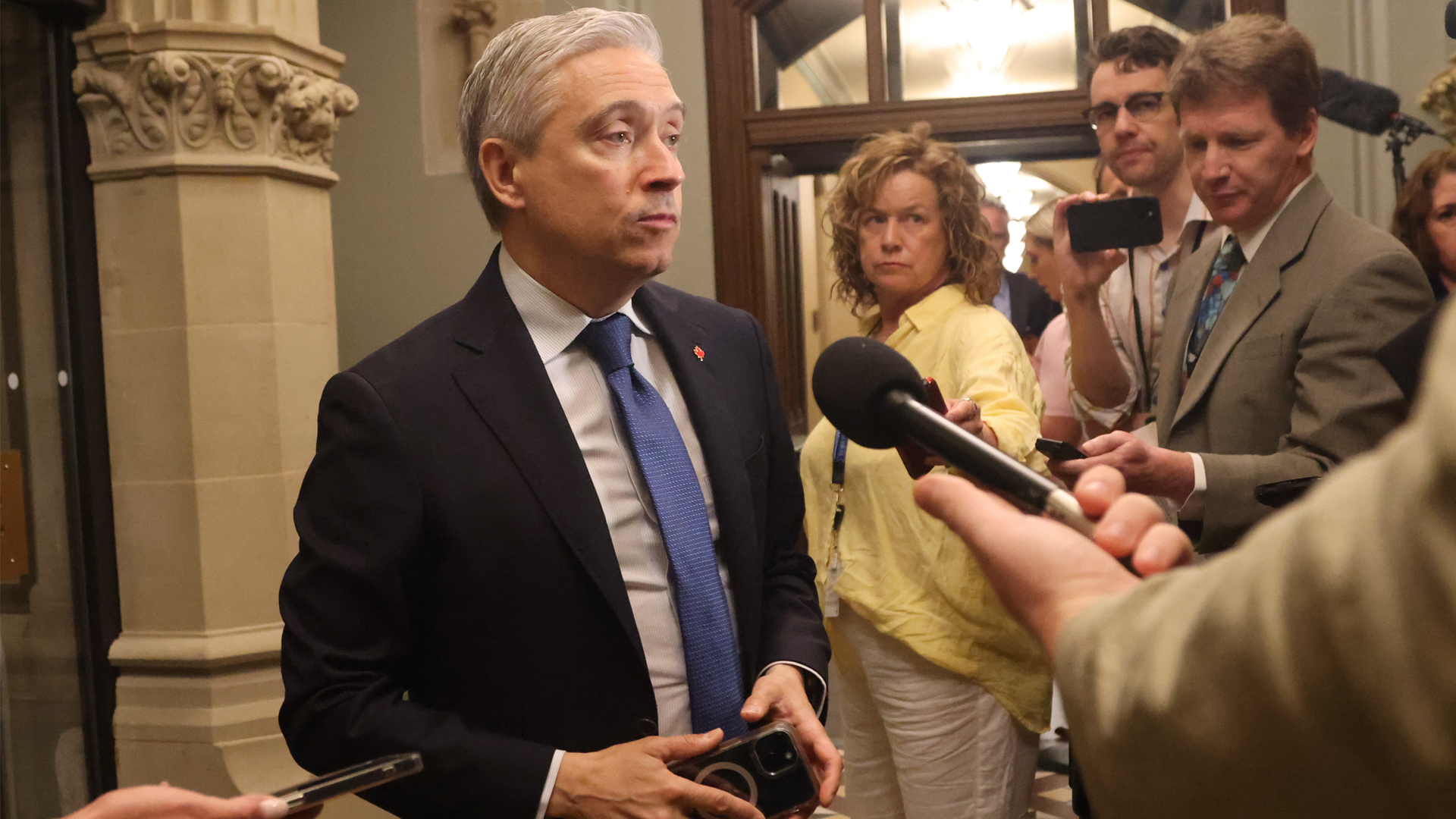
OTTAWA – Canada’s largest federal union is lining up for a country-wide strike that could put public servants on a collision course with one of the most labour-friendly governments in recent history.
Momentum is building for a strike that has no precedent. The Public Service Alliance of Canada (PSAC) has been sabre-rattling about one since it walked away from the negotiating table nearly a year ago.* Since then, the union has gotten its ducks in a row for a strike that could disrupt many government services.
Armed with a $43-million strike fund – and access to tens of millions more if needed – and the expectation of a strong strike mandate from members, PSAC has 155,000 workers who could be in a legal strike position next week during the final stretch of tax season.
A strike with five large bargaining groups withdrawing services at the same time would be unprecedented, said Larry Rousseau, executive vice-president at the Canadian Labour Congress.
“A strike of 155,000 public-sector employees would be unheard of in all of North America. This is historic. It would be the first time it’s ever happened,” he recently said.
After a long and antagonistic standoff, Treasury Board and PSAC resumed negotiations in Ottawa April 2 with the help of a mediator.
The talks focused on the common issues facing all the public servants caught in the stalemate. The top issue is wages. PSAC wants a 13.5 raise over three years. Until the talks, Treasury Board’s best offer was 8.5 per cent over four years. They will break for Easter weekend – unless the mediator and parties decide to continue because progress is being made.
The clock is ticking
But things will heat up as the long-awaited strike votes are counted over coming days. PSAC president Chris Aylward says a strong strike mandate is the extra clout the union needs to get a better deal.
The final count for strike votes of 35,000 tax workers at the Canada Revenue Agency (CRA) is being announced April 7. Next comes the strike-vote tally of 120,000 employees in the core public service. Tax workers could legally strike before mediated talks scheduled to start April 17, but that risks accusations of bad-faith bargaining. They will probably wait until they can join forces with larger group of workers.
Departments are braced. As one senior bureaucrat said privately: “They’re definitely ready for it. Now, who is going to blink first.” Another said the union is so dug in that it seems “like the action is more important than the outcome.”
Among federal unions, PSAC is a hardline negotiator. It historically leads the way in contract talks and sets the pattern for wage settlements across the public service.
A PSAC settlement will set the pattern for 50 other federal contracts being negotiated, as well as for more than 8,000 executives, whose raises – much to their chagrin – have been tied to raises unionized workers get. Some say other unions have been stalling in their negotiations to see what PSAC gets.
A strike could also break new ground as the first since the public service became a hybrid workforce. It’s unclear how PSAC will picket or government will monitor who’s at work or who’s on the picket line. Working from home also makes it easier for workers who don’t want to strike to cross virtual picket lines.
Like all Canadian workers, public servants want wage increases to protect their purchasing power in the face of rising prices. But remote work is a big issue for many public servants. They are frustrated over being ordered to return to the office two to three days a week after working remotely nearly three years.
Some workers say they would happily settle for a smaller raise or even a pay cut if they could work from home.
The problem is that the federal unions can’t negotiate where public servants work. That’s a management decision. But PSAC is exploiting that frustration, along with the fears of what lies ahead – the possible election of a Conservative government – to stoke support for the strike vote.
That fear has cranked up the pressure to get a generous deal because it will be an uphill battle catching up with inflation under a labour-unfriendly Conservative government, which is more likely to impose cuts, freezes and maybe even rollbacks.
“We can’t afford not to strike. We know what’s coming. If we take a hit now, we will never recover from that,” said a labour official who is not authorized to speak publicly.
The union is banking on the Liberal-NDP confidence and supply agreement to give them the best opportunity to get more of their demands met. Unions say the agreement offers all kinds of leverage – protecting them from job cuts, layoffs or imposing back-to-work legislation.
“With the NDP, it’s friendliest employer they’ll ever have,” said another union official. “You’re not going to get a better employer to get a deal. A Conservative government would mandate them back to work.”
But there are risks.
The dynamics have changed since PSAC walked from the table two years ago. Back then, inflation was just starting to soar, and employers were facing a global talent shortage and the government was on a hiring spree.
Inflation has begun to slow and Finance Minister Chrystia Freeland’s recent budget tightened the belt in departments with more $15 billion in cuts and billions of dollars more in reallocations.
And there’s public perception. Will Canadians blame the unions or government if a strike turns into more disruptions for everyone filing taxes, getting passports, licenses or other services? Canadians have faced the same inflationary pressures as public servants, and many have gone back to the office. Many private-sector workers feel public servants have better salaries, job security and benefits than they’ll ever get.
The recent unbridled growth and cost of the public service has also been in the spotlight. This week, the Parliamentary Budget Officer issued a report estimating PSAC’s wage demands of 4.5 per cent a year would add nearly $19.7 billion to the wage bill over the next five years. Wages are the government’s largest single operating cost and hit $60 billion last year – a 31 per cent jump since the start of the pandemic.
The PBO estimate doesn’t include other demands. The wage increase PSAC wants is only to keep public servants’ purchasing power. PSAC has other demands for wage adjustments and other non-monetary benefits specific to different jobs. They include higher overtime rates, more vacation and family leave, wage adjustments and special allowances.
The biggest public service union prepares for the first national strike in decades
Talks stall as public service union seeks 13.5 per cent wage increase over three years
Treasury Board estimates that list of demands could add up to as much as $3.1 billion a year. That’s $9.3 billion over a three-year contract. That’s an extra $27,500 per employee in the core public service.
For example, Treasury Board calculates the wage and non-wage demands for the operational group, which includes tradespeople, hospital services workers, ships’ crews and firefighters, amount to a cost increase of 14 per cent a year. Compounded over three years, that would increase the group’s compensation by 47 per cent.
That’s the biggest increase, but Treasury Board estimates annual increases for other groups range in annual compensation increases between seven per cent and nine per cent.
Some observers don’t expect an 11th-hour deal to materialize out of these mediated talks. They argue both sides are simply going through the motions to avoid any further bad-faith bargaining complaints.
After a week of talks, however, PSAC will have an idea of how far the government is willing to move on improving its wage increase.
All indications are Treasury Board’s revised offer will be somewhere between the compromise deal recommended by a Public Interest Commission (PIC) appointed to help break the logjam and the raises it recently offered the military.
The PIC panel recommended a nine-per-cent raise over three years. Treasury Board gave the military a 10.5-per-cent raise over four years. It seems unlikely PSAC will be offered less than that.
Coincidentally, that 10.5-per-cent raise is the very same deal it gave the Association of Canadian Financial Officers last fall. The government hoped back then that deal would be the settlement pattern for all federal unions.
Key dates in negotiations:
April 2-7: Mediated talks on common issues for all 155,00 workers.
April 7: Strike votes of 35,000 workers at the Canada Revenue Agency (CRA) announced.
April 11: PSAC strike votes of 120,000 members in core public service are counted.
April 12: Earliest possible date a strike could be called for workers in the core public service.
April 11-14: Mediated talks on issues specific to workers in the core public service.
April 14: Earliest date that tax workers can strike.
April 17-20: Mediated talks for issues specific to CRA workers.
* Correction: PSAC walked away from the bargaining table nearly one year ago, not two years ago as an earlier version of this article stated.
This article was produced with support from the Accenture Fellowship on the Future of the Public Service. Read more of Kathryn’s work here.











